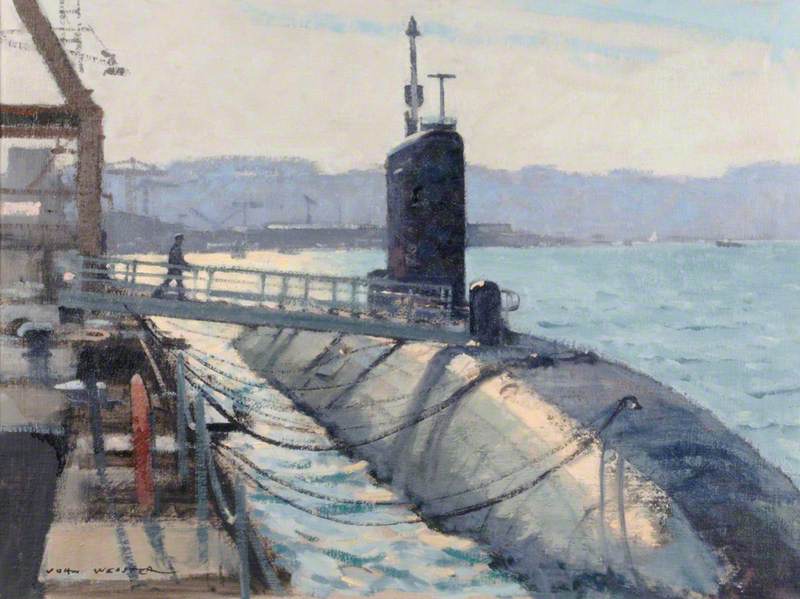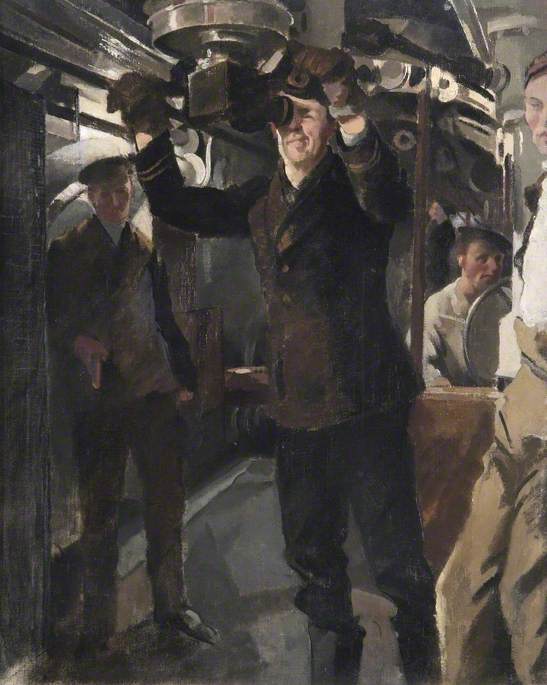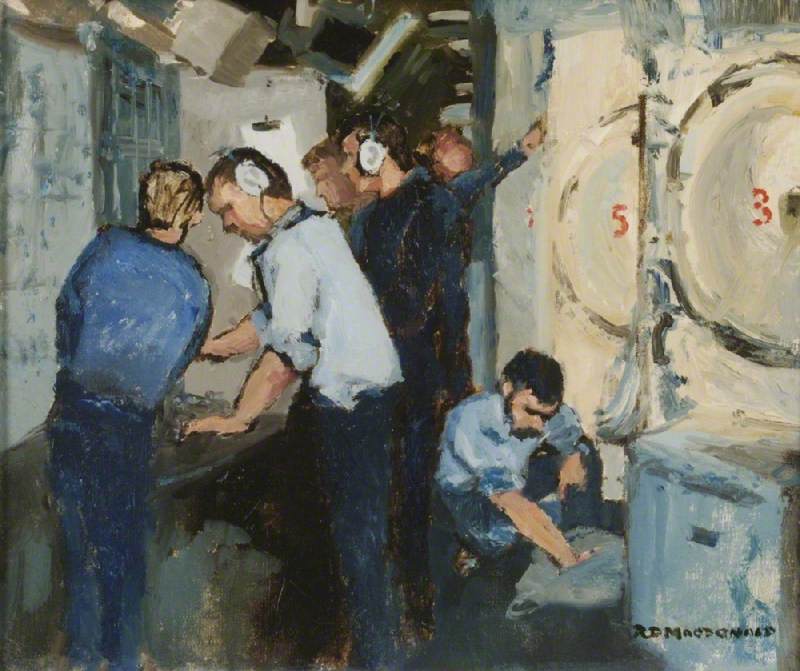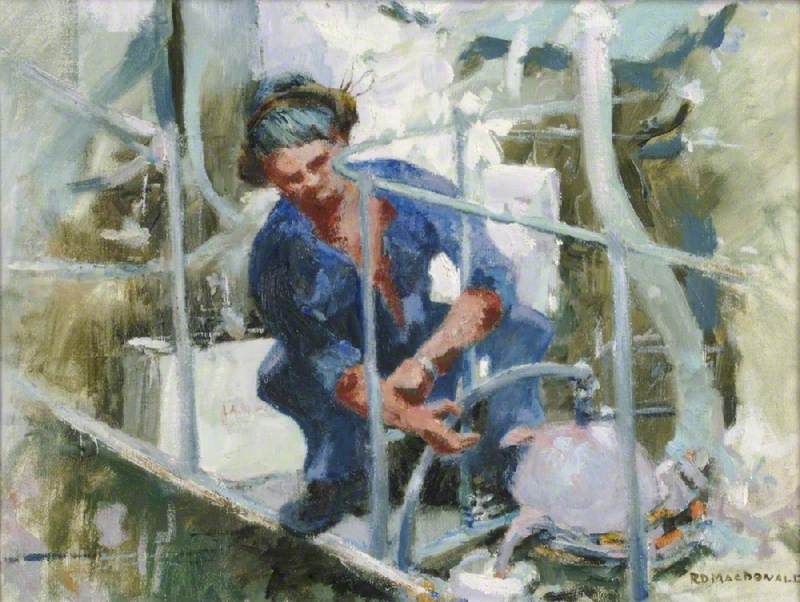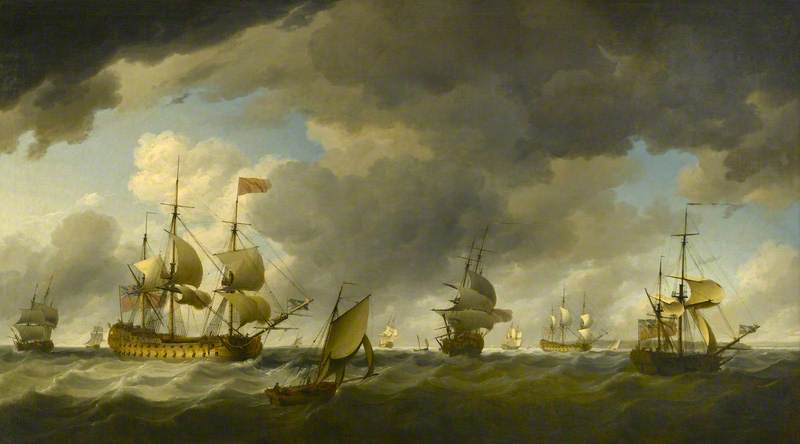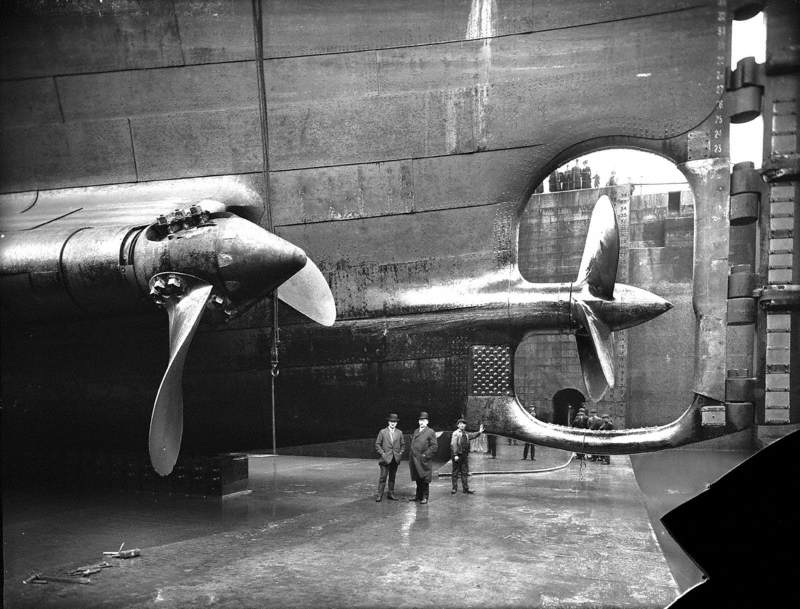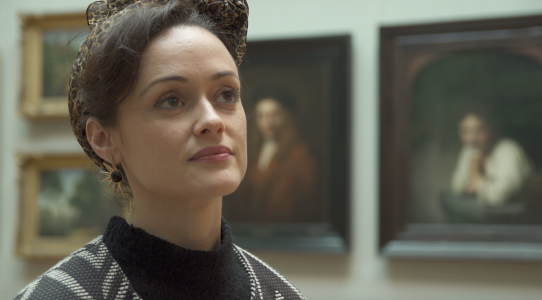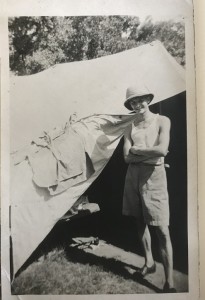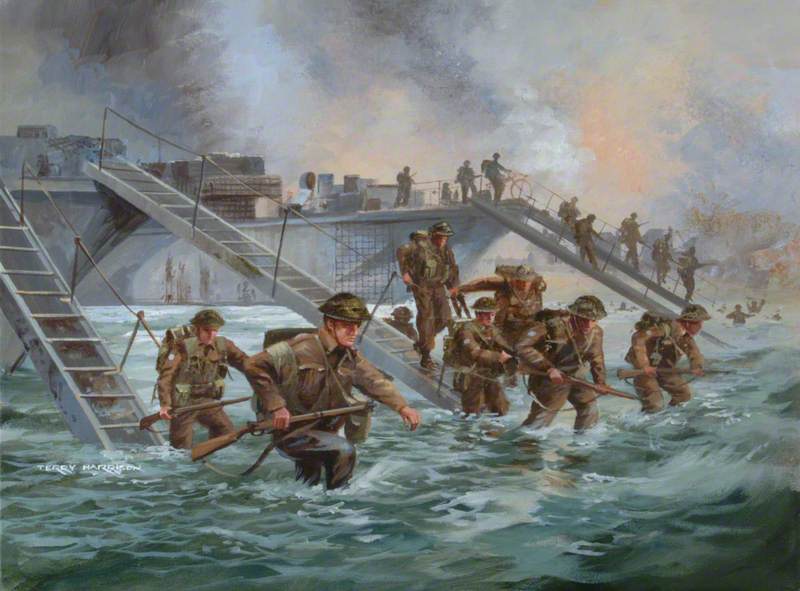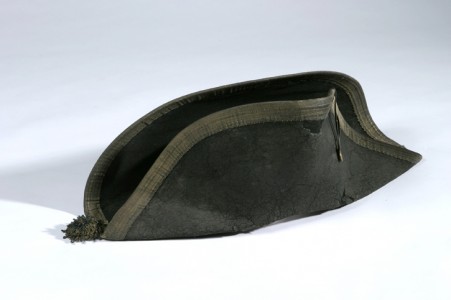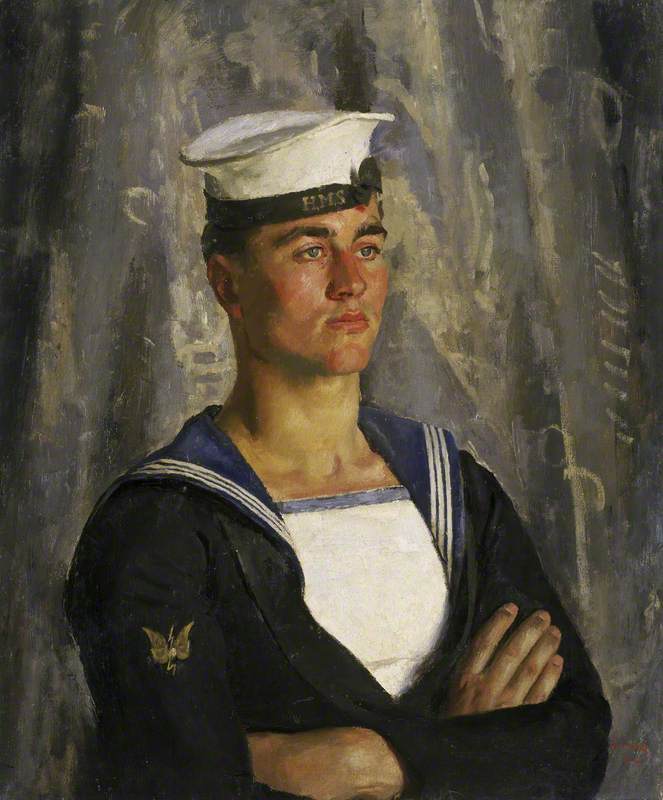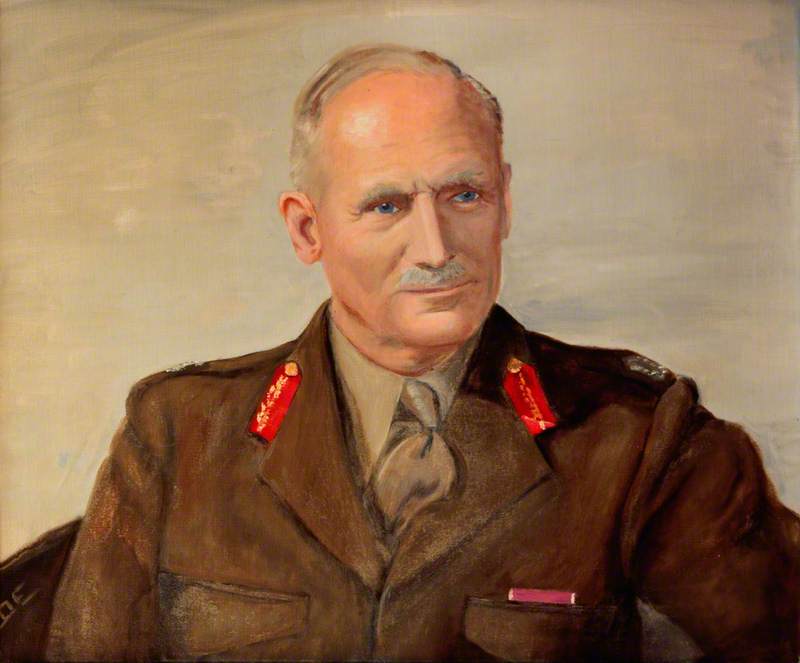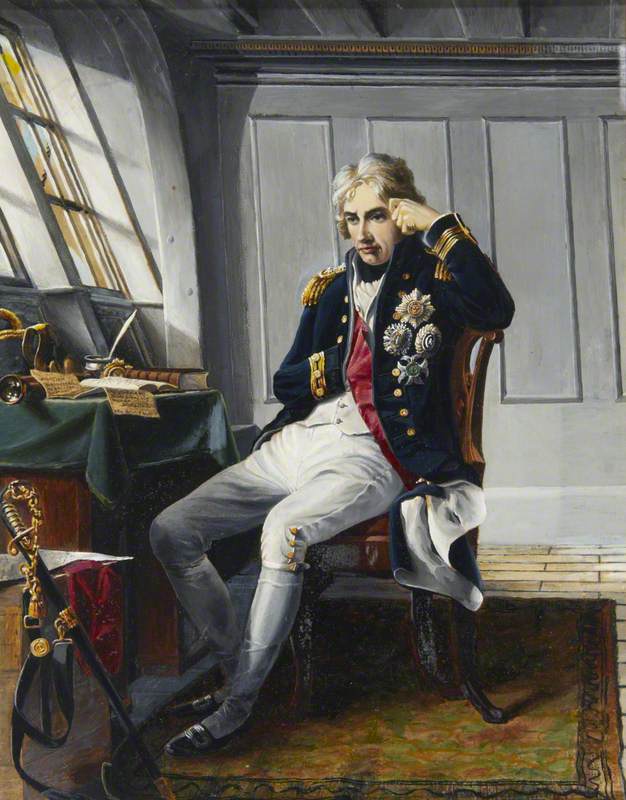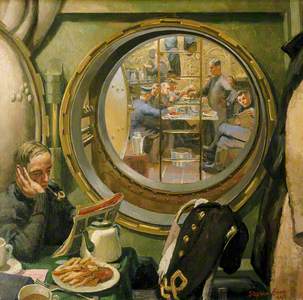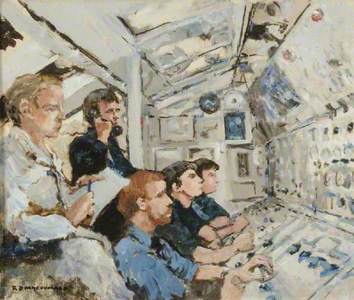A vessel of stealth and mystery, the submarine has been used to defend British waters and interests for over 100 years.
From espionage and sabotage to wartime action and nucleardeterrent, the ‘silent service’ has been involved in every significant operation since 1902.
Discover the secrets of these amazing underwater warships, with input from the experts at the Royal Navy Submarine Museum.
Britain’s first submarine – the Holland I – entered service in 1902.
These early boats didn’t have separate internal areas, as shown here. If a collision occurred, it was likely that the crew would be drowned and the submarine a total loss.
However, as new submarines were designed, separate internal sections – or ‘bulkheads‘ – were introduced.
On Board an S-Class Submarine: Up the Conning Tower
c.1944
Stephen Bone (1904–1958) 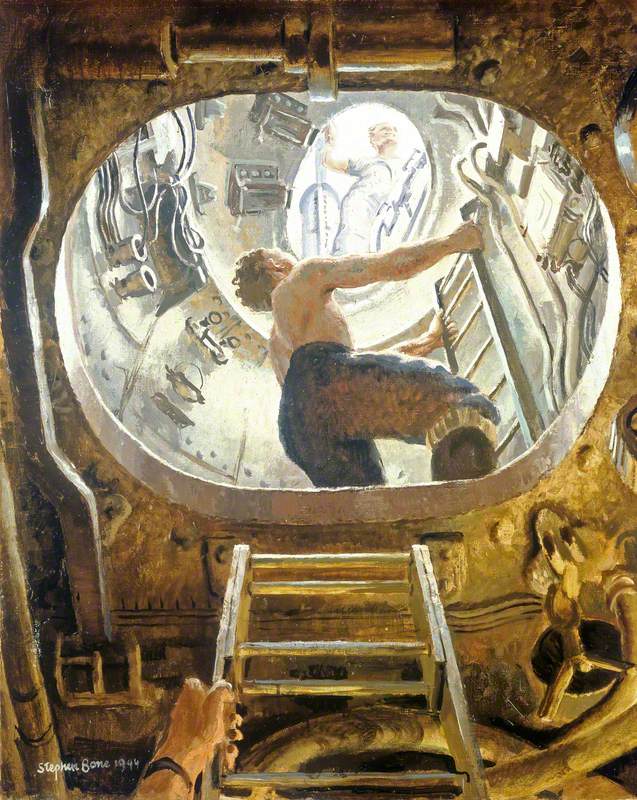
The conning tower is the most prominent feature on the exterior of a submarine.
It allows the crew to steer – or ‘conn’ – the submarine when it’s on the sea surface.
The higher the vantage point, the further the visual horizon, similar to being in a crow’s nest on a sailing ship.
The conning tower also provides welcome fresh air to any submariner going up it.
S-Class Submarine:The Wardroom and Forward Mess Deck Seen through the Davis Escape Chamber
1945
Stephen Bone (1904–1958) 
As the interior of submarines divided into separate areas, so did the accommodation between officers and ratings (lower-ranking crew members). The wardroom is the officers’ area, seen here in the foreground.
Officers’ quarters on surface ships were once used to treat wounded men during battle – hence the term ‘wardroom’.
The forward mess deck – ‘mess’ for short – is the ratings’ quarters. This cramped space, seen in the background, is where the men eat, sleep and relax when off-duty.
The two areas are separated by the Davis escape chamber which was the emergency exit if the submarine sank.
The Control Room in a Submarine during an Attack
1943
William D. Dring (1904–1990) 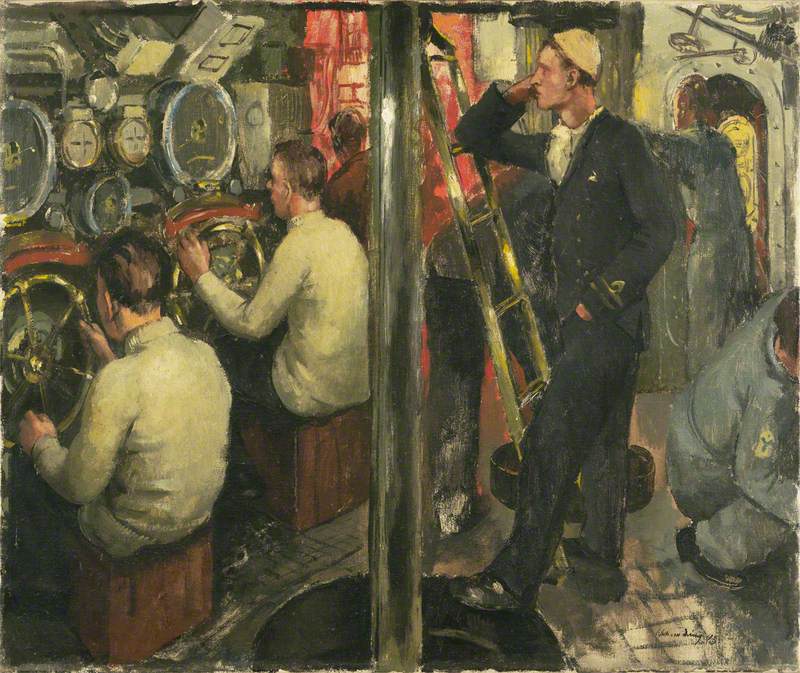
The control room is the nerve centre of a dived boat. From here, the Commanding Officer controls all. He’s behind the ladder, crouching down on the attack periscope.
The seated men are operating the hydroplanes that help to control the boat’s precise movements.
The First Lieutenant leans on the ladder. He's second in command and ensures an accurate ‘trim’, or depth, is kept during the attack.
Losing the trim could cause the boat to sink below periscope depth or break the surface, increasing the risk of a counter attack.
Periscopes are the eyes of a dived submarine, providing a crucial view above the sea’s surface.
The attack periscope has a single eye piece and is used during the final stages of an attack. The top end is extremely slim so the ripples produced as it breaks the water are less visible to the enemy.
The search periscope is binocular, (with twin eye pieces) and used to search above the surface. The larger field of vision enables greater target detail.
As the Cold War intensified, the Dreadnought, Britain’s first nuclear submarine, was commissioned in 1963.
By the late 1960s, Polaris missiles – with a range of 2,500 miles – were being carried by nuclear submarines, including HMS Renown.
They were stored in the missile compartment situated in the middle of the boat. The tubes in which they were kept would launch the missiles vertically.
In the painting, weapon engineers are testing and checking the missiles, ensuring they are ready for immediate launch in the event of an attack.
In this painting, an engineer checks a pump in the engine space of HMS Spartan, wearing ear defenders against the noisy machinery.
Underwater, submarines can be detected by the enemy from the noise they make.
In a bid to maintain their crucial element of stealth, various methods are used to try and make them quieter. This includes insulating machinery on cushioned mountings.
Submarines also carry detection equipment telling the crew how much noise their submarine is making.
If the periscopes are the eyes, the manoeuvring room is the beating heart of a nuclear submarine. It is continuously manned when the nuclear reactor is operating.
The Engineering Officer of the Watch – in the white overalls – and the Chief of the Watch stand behind three panel operators.
The panels monitor the reactor, electrical systems and also the propulsion readings, which tell them how the boat is moving through the water.
The Navy’s latest nuclear submarines – Astute class – are capable of circumnavigating the globe without surfacing. They are said to be as complex as space shuttles.
National Museum of the Royal Navy
Editor's note: This story first appeared on the BBC Arts website. The BBC is an Art UK project partner.
Continue your underwater journey of discovery: read about the crew of a Cold War Royal Navy submarine or learn about the latest class of British submarine.
